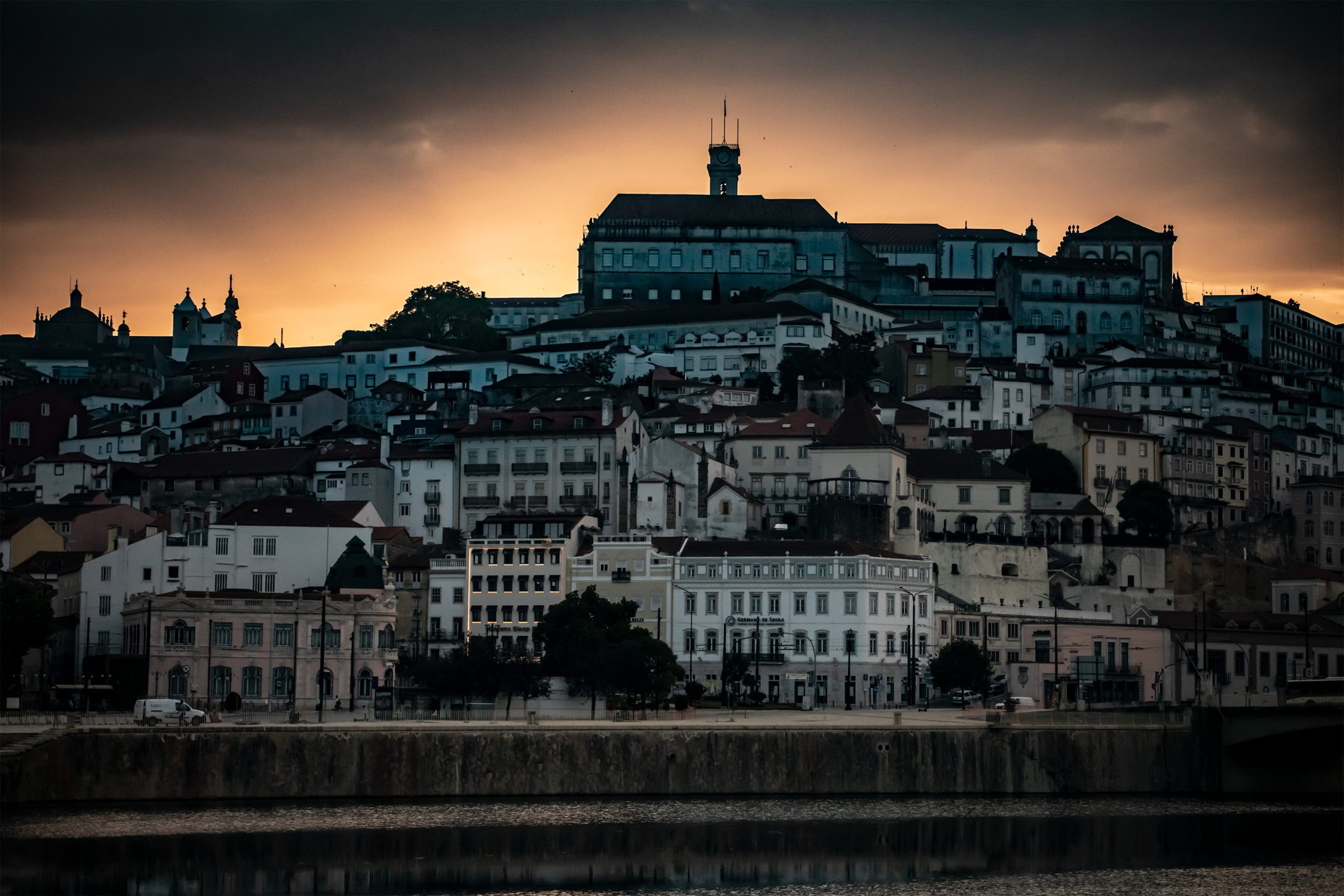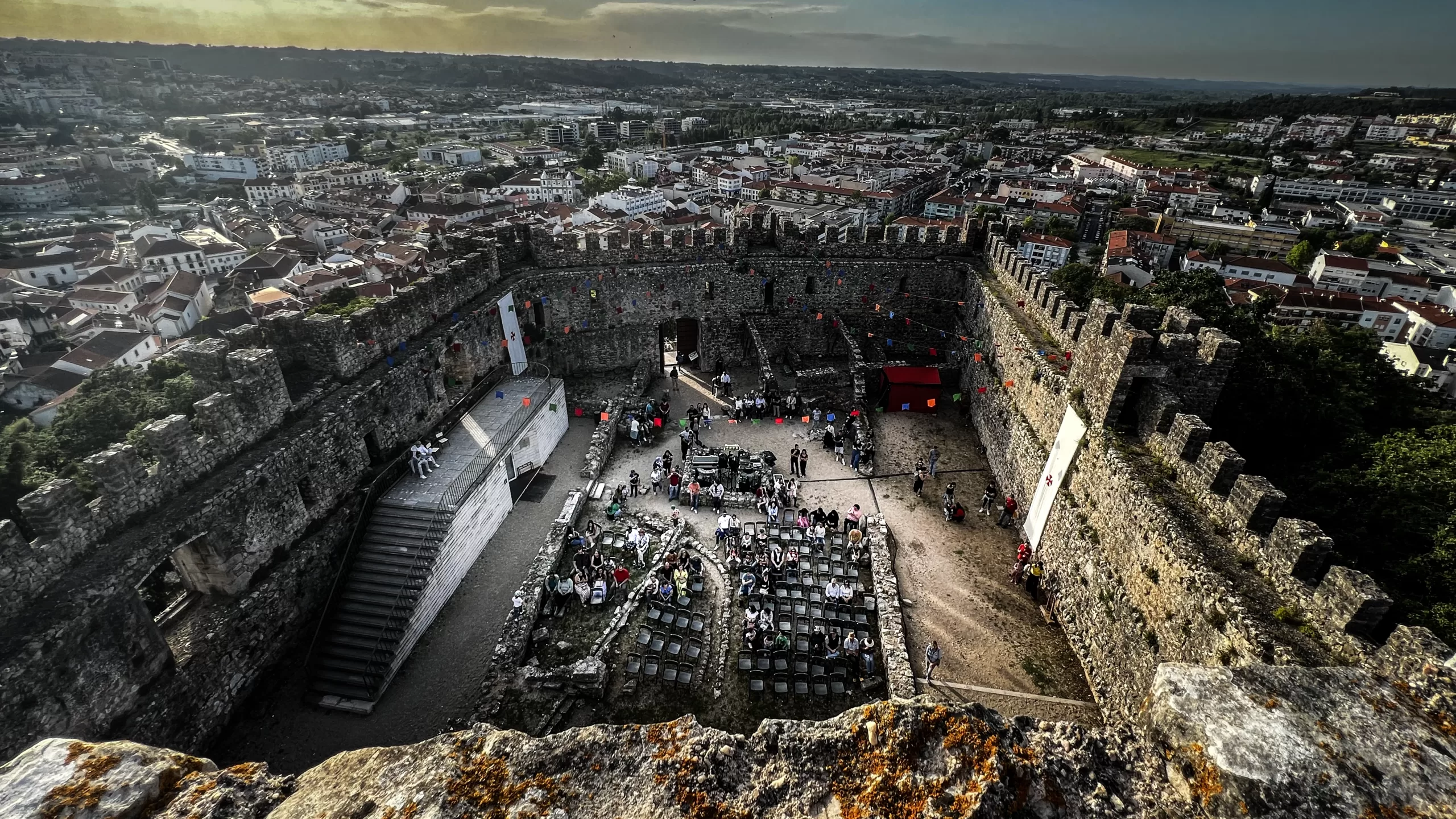As I walk around Coimbra’s streets, I experience an infatuation with Portugal’s rich history. All the stone buildings’ wear, in Coimbra signifies they have been there for a long while. The cobblestone streets suggest the stones have been in the ground for a long time.
Looking around, it is easy to come up with 1000 and 1 questions. Therefore you too might be asking, “how long has Coimbra been a city? or Who are the people who built the city?”
Below I will attempt to answer all of these questions you may have, as long as I do not run out of space.
Where in Portugal is Coimbra?

While some of you might already be here in Coimbra, some might be hearing about Coimbra for the first time. If you are already here, this is an excellent point to start learning about Coimbra.
Coimbra is a city and a municipality in Portugal. The municipality’s population at the 2011 census was 143,397 in an area of 319.40 square kilometers (123.3 sq mi). Therefore, Coimbra is the second-largest urban area in Portugal outside Lisbon and Porto Metropolitan Areas, after Braga.
It is the largest city in the district of Coimbra and the Centro Region.
You can find many archaeological structures dating back to the Roman era. You can see well-preserved aqueduct and cryptoporticus from when Coimbra was the settlement of Aeminium.

Similarly, you can find buildings from 1131 to 1255 still standing. These buildings were from when Coimbra was the capital of Portugal.
During the late Middle Ages, Coimbra declined as the political center of the Kingdom of Portugal. Therefore, Coimbra began to evolve into an important cultural center.
The evolution into a cultural center helped establish the University of Coimbra in 1290, the oldest academic institution in the Portuguese-speaking world.
The University attracts many European and international students and tourists for its monuments and history. UNESCO classified its historical buildings as a World Heritage site in 2013.
Coimbra’s Ancient History
Roman Republic

The building of Arcos do Jardim occurred between 1568 and 1570 on the remains of a Roman aqueduct.
The city of Coimbra was located on a hill by the Mondego River. The Roman town at that time was called Aeminium. You might even find a restaurant or two with the same name.
The Romans founded Aeminium in this place at the time of Augustus‘ rule. The erection of the Roman city’s wall followed alongside the hillside in an orthogonal method to strategically protect itself using the natural boundaries. The Romans built the cardo maximus and decumanus maximus to cross the Forum.
Walking around the University of Coimbra, you will notice an aqueduct near the Botanical Gardens. The remains of the aqueducts were later parts of medieval renovations, which now incorporate the prison and botanical gardens.
The Fall of Conimbriga and Rise of Aeminium

Aeminium fell under the influence of the larger Roman villa Conímbriga. However, the Sueves and Visigoths demolished Conimbriga between 465 and 468. As a result, the Romans abandoned Conímbriga and fled to Aeminium.
Aeminium confirmed its position by being situated at the north-south trade routes that linked the Roman Bracara Augusta, now known as Braga, and Olisipo, now known as Lisbon, with its waterway.
The Romans could quickly move their goods to the Atlantic Ocean to the west. Therefore this waterway enabled interior connections and the coast.
The limestone table provided a dominant position overlooking the Mondego for their settlement. The original location had access to fertile lands irrigated by the water of the Mondego River.
Traces of this early history comprise the cryptoporticus of the former Roman forum.
The move of the settlement from Conimbriga to Aeminium resulted in the name change to Conimbriga, evolving later to Colimbria.
When did the Suebi, Alans, and Visigoths take over Aeminium?
After the Roman Empire for a long time, a deluge of barbarians flooded the Iberian Peninsula in 409. The Lower Mondego area recognized Hermeric, the landlord of the Suebi, as its ruler.
However, Ataces, King of the Alans, ambition to gain territory permeated his mind. Therefore, Coimbra fell from the hands of Hermeric. Therefore, Ataces, the new lord of Coimbra, depopulated and devastated it, fearing the security of its fortresses. Delighted with the beauty of Lower Mondego and the easiness of its fields, he laid beside it the foundations for a new city called Colimbria.
Ataces converted to Christianity, but being Arian, he oppressed Catholics with savagery. The captives were beheaded before the walls, or their bodies served as the foundation of the walls. Those who survived became enslaved people and worked as cargo donkeys.
Nobody escaped the Ataces’ tyranny as he ordered everyone to work on the construction of the walls.
The inspiration for Coimbra’s coat of arms was the concept of Cindazunda, Hermeric’s daughter. The tie of the legendary lion symbolism is a reference to Ataces, ruler of the Alans. The serpent is bound to Hermeric, ruler of the Suebi.
Building of the City’s Walls

Workers carved this emblem into the walls as servants built the city’s walls and towers to please the King.
Today, you can still observe these carvings on the walls. The coat of arms for Coimbra is a unique emblem in which King Ataces took pride. Cindazunda established the bonds of peace between the two kings. Her professing Catholicism was the catalyst to improve Coimbra’s situation, mitigating the fierce spirit of Ataces against the Catholics.
The Visigoths would oversee the region later, from the 5th to early 8th century. During the Visigothic era, King Wittiza was in charge of creating the County of Coimbra.
Emínio, the Visigoth name for Coimbra, was established for his son Prince Ardabast, which persisted until the Muslim invasion from the south.

How did Islamic Rule Influence Coimbra’s History?
The first Muslim fighting on the Iberian Peninsula occupying territory occurred between 711 and 715. Coimbra ended up surrendering to Musa bin Nusair in 714.
Although Coimbra was not a large settlement, Qulumriyah, in the context of Al-Andalus, was the largest agglomerated center along the northern Tagus valley.
The principal city boasted a walled enclosure of 10 hectares, supporting between 3000 and 5000 inhabitants. Remnants of this period include the gates of the Almedina. The fortified palace’s utilization by the city’s governor was a strategic place of power.
Later, early Portuguese monarchs would convert this structure into the Royal Palace.
The Christian conquests temporarily pushed the Banu Dānis and the other Muslims to abandon the region. The Moors recaptured the castle in 987–1064. Then again, in 1116, they seized two more castles in hopes of defending the territory.
What was happening in the Middle Ages in Coimbra’s History?
The Christian conquest to expel the Moors of the territory was attained in 1064 by King Ferdinand I of León and Castile. They appointed Dom Sisnando Davides to reorganize the economy and administer the city’s lands encircling portions of Portugal.
The integration of the Counties of Portugal and Coimbra later occurred under one dominion by the stewardship of Henry of Burgundy in 1096.
Henry extended the frontiers of the County, confronting the Moorish forces.
How did Afonso Henrique lead Portugal into Power?
Their son, Afonso Henriques, took up residence in the ancient seat of the Christian County of Coimbra. He sent expeditions to the south and west, consolidating a network of castles that included Leiria, Rabaçal, Alvorge, and Ansião.
The Monastery of Santa Cruz is where you can find the first Portuguese monarch Afonso Henriques‘ resting place.
During the 12th century, Afonso Henriques governed these fertile lands. The protection of the river access defense was overseen by the fortified city, whose population exceeded 6000 inhabitants.
The people of Coimbra included magnates, knights, and high clergy. The youthful Infante prompted the building of his seat and funded the Santa Cruz Monastery.
The Founding of the Santa Cruz Monastery

The Santa Cruz Monastery was founded in 1131 and was the most important Portuguese monastic institution. Theotonius founded the monastery.
Theotonius oversaw the construction of the Old Cathedral, reconstruction of the original Roman bridge in 1132, and repaired and renovated fountains, kilns, roads, stone pavements, and the old city’s walls. To confirm and reinforce the municipality’s power, he conceded a formal charter in 1179.
Already in the Middle Ages, the Coimbra city division was into two parts, the upper city, the Almedina, where the aristocracy and the clergy lived, and the lower section, where the merchant, artisan, and labor centers in the lower city Arrabalde, by the Mondego River.
Today the Baixa references this lower part of the city.
The town was encircled by a fortified wall, some remnants still visible, like the Almedina Gate.
The Monastery of Santa Clara a Velha

The Monastery of Santa Clara a Velha was refounded in 1314 by Queen Elizabeth of Portugal. Subsequently, this was known as the convent of Poor Clares in the parish of Santa Clara.
Meanwhile, the municipality grew agglomerations, notably around the monasteries and convents that developed in Celas, Santa Clara, and Santo António dos Olivais.
The city’s most critical work in Gothic style is the Monastery of Santa Clara-a-Velha. However, they built this structure too close to the river. Subsequently, frequent floods forced the nuns to abandon it in the 17th century when they later built the Monastery of Santa Clara-a-Nova uphill.
The Queen’s magnificent Gothic tomb resides in the new convent. The excavation of the old convent’s ruins began in the early 2000s. Today you can see it on the opposite bank of the river from the university.
What did the Renaissance Period look like in Coimbra’s History?
The interior stacks of the Joanine Library are one of the oldest collections in Portugal.
During the Age of Discovery, in the 15th and 16th centuries, Coimbra was again one of the main artistic centers of Portugal. Thanks to both local and royal patronage. Therefore, the development of many artists’ skills occurred here.
These artists left important Manueline and Renaissance works in the town. Dating from this period is the remodeling of the Santa Cruz Monastery, including the tombs of Kings Afonso Henriques and Sancho I,
Later the Renaissance Manga Fountain out front was built, and the altarpieces and triumphal portal of the Old Cathedral, among other works.
Who Founded Coimbra University?

King Dinis I, founded the University of Coimbra as a Studium Generale in Lisbon in 1290. Portugal relocated to the University of Coimbra in 1308, but in 1338 King D. Afonso IV returned the University to Lisbon.
The founding of Coimbra University is very important aspect of Coimbra’s History and the culture of Portugal.
The University was permanently transferred to the current premises in 1537 by King Joáo III, and expansion into the Coimbra Royal Palace was completed by 1544.
The permanent University fixture in Coimbra has produced a culture that revolves around the state-run University. For many decades, several colleges established by the religious orders provided an alternative to the official institution but gradually discontinued the secularization of education in Portugal.
Built-in the 18th century, the Joanina Library is a Baroque library. This library is another notable landmark of the ancient University. The building of the University Tower from the school of the German architect Ludovice occurred between 1728 and 1733, nearby the library.
Baroque and Modern Era in Coimbra‘s History
In 1772, the Marquis of Pombal, prime minister of King José I, embarked on a significant reform of the University. The investigation of the sciences carried vast importance here and still does to this day.
The collections of scientific instruments and materials are now in the Science Museum of the University of Coimbra. The science museum constitutes one of Europe’s most crucial historical science collections. However, his desire to modernize the University completely demolished Coimbra’s medieval city walls and castle. Very little of which remains today.

The first part of the 19th century was a challenging period for Coimbra. French troops were invading Portugal under the control of Andoche Junot and André Masséna during the Peninsular War.
Nicholas Trant led 4,000 Portuguese militia and dealt Masséna a heavy blow when they recaptured Coimbra on 6 October 1810.
Rebuilding in the 19th Century
In March 1811, the militia successfully defended against the retreating French army.
The city recuperated in the second half of the 19th century with infrastructure improvements like the telegraph, gas light, and railway system.
Later they built a railway bridge over the Mondego River. The renovation of the Portela bridge and the broadening of roads were some other infrastructure improvements.
Eventually, all these infrastructure advancements allowed for expansion into Santa Cruz.
By 1854, the expulsion of the religious orders and municipal reforms presented an opportunity to reorganize. The municipality of Coimbra forced some changes in the existing structure of the administrative divisions.
How the new Portuguese Republic effected Coimbra’s History?

On 1 January 1911, electric tramways were introduced to the city. They connected the old quarter with its expanding periphery. Therefore, the city was able to include the residential areas of Celas, Olivais, Penedo da Saudade and Calhabé.
Therefore, this was only the initiation of the municipality’s growth. Civil construction projects marked the territory’s economic activity, with new areas such as Montes Claros, Arregaça, Cumeada, and Calhabé growing in the city’s shadow.
Even projects planned at the end of the 19th century gained new initiatives, including expanding the Santa Cruz neighborhood. You can see this neighborhood on the other side of the river from the university.
The rapid development of these neighborhoods transformed the medieval town into the city you see today. Granted, the past 50 years has see progressive growth. However, the tourist areas you have enjoyed saw a significant revitalization.
If you want to imagine what the streets looked like previously, find a road with some large cobblestone.
The Atypical Last Line
If you made it this far, then congratulations. You are a real trooper with your interest in Portuguese History. You should also be well informed on Coimbra’s History. Therefore, this was quite a bit to digest as it is a synopsis of 100 years of History. Please consider joining my newsletter if you enjoyed this dive and want more content.













You must be logged in to post a comment.